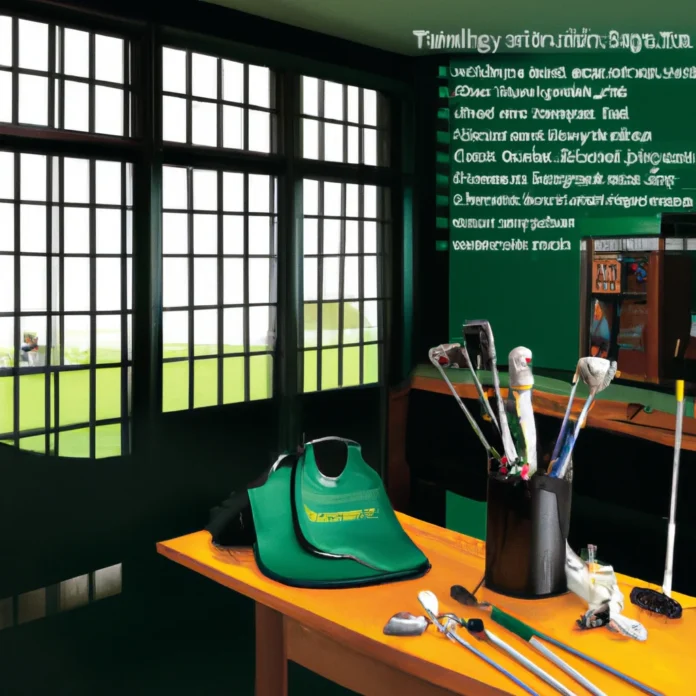Maintaining golf clubs is essential for ensuring peak performance on the course. The right care can extend the lifespan of the clubs and improve overall playability. In this comprehensive guide, we will cover various aspects of golf club maintenance, including cleaning, storage, and inspection, while providing valuable insights that will help golfers of all skill levels keep their equipment in top condition.
Understanding the Importance of Golf Club Maintenance
Golf clubs are significant investments, and maintaining them properly can greatly enhance your golfing experience. Regular maintenance not only preserves the appearance of the clubs but also optimizes their performance. Well-maintained clubs can improve accuracy and distance, allowing golfers to achieve better results on the course.
Cleaning Your Golf Clubs
Regular cleaning is the cornerstone of effective golf club maintenance. Dirt, grass, and debris can accumulate on your clubs, affecting their performance. Here’s a detailed guide on how to clean your golf clubs:
Materials Needed for Cleaning
- Soft-bristled brush
- Bucket of warm water
- Dish soap or mild detergent
- Microfiber cloths
- Toothpick or a small tool for cleaning grooves
Cleaning Procedure
- Fill a bucket with warm water and add a few drops of dish soap.
- Soak the clubheads in the soapy water for a few minutes.
- Use a soft-bristled brush to scrub the clubheads gently, paying special attention to the grooves. This helps remove any dirt or grass that may affect performance.
- For stubborn debris, use a toothpick to carefully clean out the grooves without damaging the club.
- Rinse the clubs under clean water to remove soap residue.
- Dry the clubheads thoroughly with a microfiber cloth to prevent rust.
Cleaning Different Types of Clubs
Woods
When cleaning wood clubs, focus on the clubhead and shaft. Avoid soaking the entire club in water, as this can damage the finish. Use a damp cloth to wipe down the shaft and a brush for the clubhead.
Irons
Irons are more prone to dirt buildup in their grooves. Follow the cleaning procedure mentioned earlier, ensuring to clean the grooves thoroughly for optimal spin and control.
Putters
Putters may require special attention due to their unique designs. Clean the face with a damp cloth and avoid using a brush that could scratch the surface.
Inspecting Your Golf Clubs
Regular inspection of your golf clubs is essential to identify any damage or wear that might affect performance. Here’s how to conduct a thorough inspection:
Checking for Damage
- Examine the clubheads for any dents or scratches.
- Inspect the shafts for any bends or cracks.
- Look at the grips for signs of wear or slickness, which could affect grip.
Identifying Performance Issues
If you notice any changes in your game, such as decreased accuracy or inconsistent distances, it could be time to inspect your clubs closely. Pay attention to any signs that may indicate the clubs are not performing as they should.
Storing Your Golf Clubs
Proper storage is crucial for maintaining the condition of your golf clubs. Here are some best practices for storing your clubs:
Indoor Storage
When storing clubs indoors, keep them in a cool, dry place away from direct sunlight. Use a golf bag that offers adequate protection, and consider using headcovers for woods and putters to prevent scratches.
Outdoor Storage
If you must store clubs outdoors, invest in a high-quality golf bag that is weather-resistant. Ensure that the clubs are clean and dry before storage to prevent rust and deterioration.
Maintaining Golf Club Grips
The grips on golf clubs play a vital role in performance. Worn or slippery grips can lead to poor shot accuracy. Here’s how to maintain the grips:
Cleaning Grips
- Use warm, soapy water and a cloth to wipe down the grips.
- Rinse with clean water and dry thoroughly.
Replacing Grips
Grips should be replaced every 40 rounds or at least once a year, depending on usage. Signs that grips need replacement include excessive wear, slickness, or visible cracks.
Dealing with Rust and Corrosion
Rust can be a significant issue for golf clubs, especially those with steel clubheads. To prevent and deal with rust:
Preventing Rust
- Always dry clubs thoroughly after cleaning.
- Store clubs in a dry environment.
- Consider using a rust preventative spray on clubheads.
Removing Rust
If rust appears, use a rust remover designed for golf clubs or a fine steel wool pad. Gently scrub the affected area and reapply a protective coat afterward.
Professional Maintenance Services
While regular maintenance is important, sometimes professional services are beneficial. Consider taking your clubs to a qualified professional for:
Reshafting
If you notice significant wear or damage to the shaft, reshafting may be necessary. Professionals can match the correct shaft to your playing style.
Regripping
Having your grips replaced by professionals can ensure they are applied correctly, enhancing performance.
Seasonal Maintenance Considerations
Depending on the season and where you live, your maintenance routine may need adjustments:
Winter Storage
During colder months, store clubs indoors to prevent damage from freezing temperatures. Consider cleaning and inspecting them before the golfing season begins.
Summer Care
In warmer weather, ensure clubs are kept cool and dry. Regularly check for signs of wear due to increased play.
Conclusion
Maintaining your golf clubs is vital for achieving peak performance and prolonging their lifespan. By following the guidelines outlined in this article, you can ensure that your clubs remain in excellent condition, ready to support your game. For more information and resources on golf equipment maintenance, visit Autoxite.


